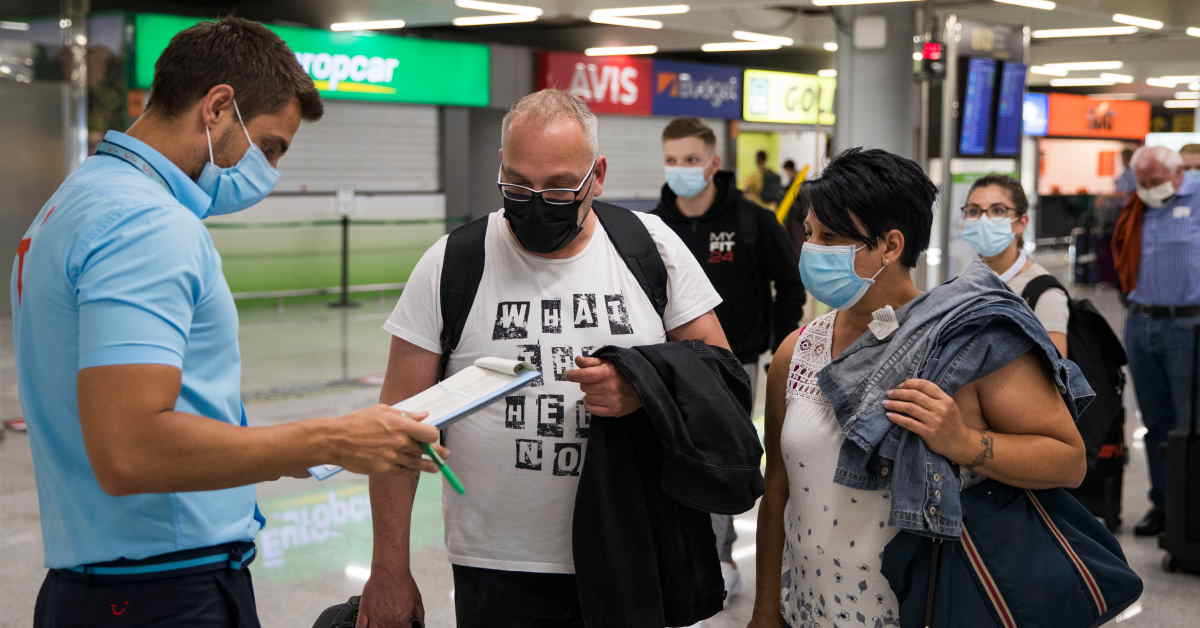European Union (EU) member states remained divided Friday over the partial reopening of Europe's border on 1 July, though the United States (US), where the coronavirus is still spreading, was to remain excluded, diplomats said.
EU envoys have argued for days on drawing up a list of criteria for reopening borders, with some member states worried about the reliability of coronavirus data, notably from China.
Sources said that the meeting ended with a tentative list of about 18 countries free to travel to Europe, with national governments given until 1600 GMT on Saturday to approve it.
Travellers from China would be approved to enter, but only subject to reciprocity from Beijing, the sources added, with no further details provided.
The toughest resistance to a short list came from Portugal and Greece, one diplomat said, both top tourism destinations that are hoping to salvage at least some of the summer holidays.
Countries highly dependent on tourism "want to reopen ASAP for as many as possible," the EU diplomat said.
"The others are reticent to move fast to save eight weeks of tourism season, however important it may be."
Non-essential travel to the bloc has been banned since mid-March and the restrictions are to be gradually lifted starting 1 July, as the pandemic recedes – at least in Europe.
Greece, however, has already reopened airports to travellers from several countries beyond Europe, including China and South Korea.
"A European agreement is essential," said Spanish government spokeswoman Maria Jesus Montero.
"We want an agreement to avoid health risks. If a country allows entry, there is free movement. We urge that an agreement be reached now, quickly and shortly before 1 July."
Powerful Outbreaks
Whatever is decided in Brussels will stand only as a recommendation since border control remains a national competence and governments can in the end go their own way.
For travel purposes, Britain still counts as a member of the EU until the end of its post-Brexit transition period. Four non-EU countries are members of the bloc's Schengen passport-free zone.
Some EU members want to limit the reopening to countries with an epidemiological situation "comparable or better" than that in the bloc – that is with 16 or fewer cases of COVID-19 per 100,000 inhabitants over the past two weeks.
If those criteria are confirmed, and if the members agree that other countries' reporting is accurate –travellers from the US, Brazil and Canada would remain banned.
Those arriving from Japan, Australia, Morocco, Venezuela, India, Cuba and the Balkans would be most likely welcome.
However, the health-based criteria have collided with geopolitics, with some countries reluctant to ban the United States (US) while welcoming visitors from China, where the pandemic began.
One possible scenario would see the list updated every two weeks, allowing for a swift removal of banned countries as the pandemic evolves.
The US is currently the country most affected by COVID-19 with more than 121,000 deaths – while Europe believes it has passed the peak of its own outbreak.
More than 2.3 million cases have been detected in the US and several states in the south and west experiencing powerful outbreaks.
Asked about the reopening of transatlantic travel, US Secretary of State Mike Pompeo on Thursday said Washington was "working with our European counterparts to get that right."
"We've denied travel to Europe and vice versa. I think we're all taking seriously the need to figure out how to get this open," Pompeo told a forum. - AFP
